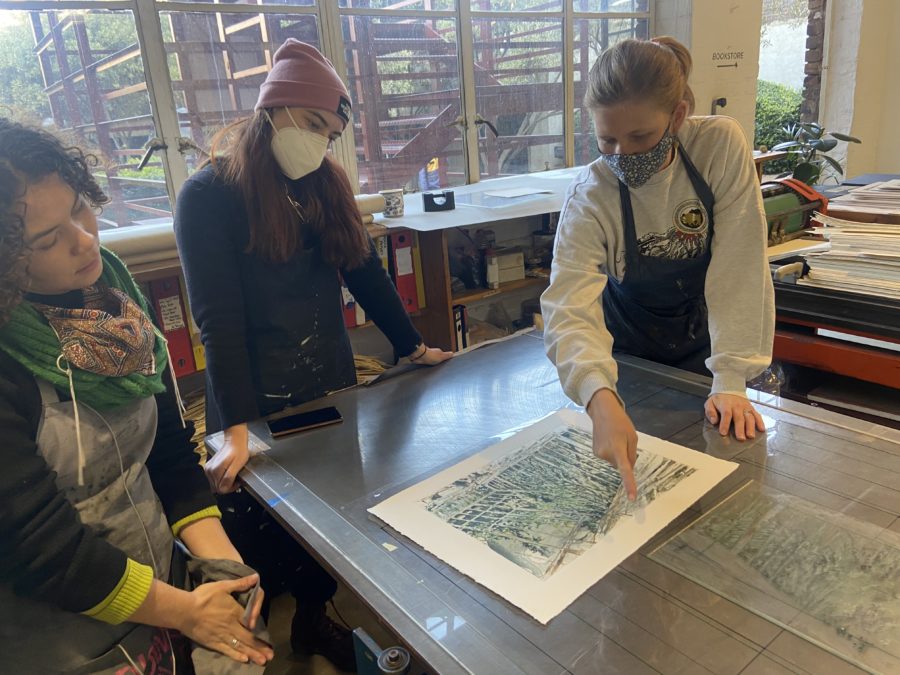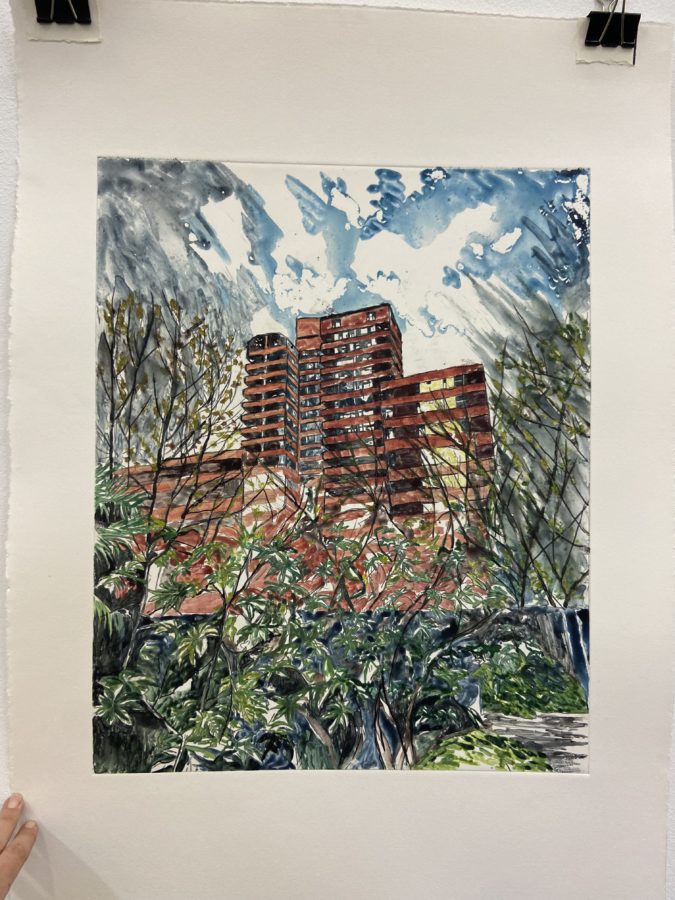The Gallery team sat down with Adele van Heerden and asked her to elaborate on her personal experience in the workshop…

David Krut Projects (DKP): What are you enjoying most about working at DKW?
Adele van Heerden (AvH): It’s been really great to work with everyone involved at David Krut Projects. The Printers (Roxy Kaczmarek and Kim-Lee Loggenberg) are there every step of the way, creating a supportive environment. They are very good at guiding me and providing valuable insights as we go along. I’ve also had the opportunity to have some important and meaningful conversations with Ame Bell, the gallery director. There are many, longer term projects on the go at the workshop, and it’s been fascinating to see the way they tackle it as a team.

DKP: How are your current surroundings influencing the works that you are working on at the moment?
AvH: I have been really surprised with the amount of natural spaces, gardens, trees and birds in Johannesburg. As an outsider to Johannesburg I’ve only had the opportunity to visit and discover small “pockets”, visiting for about a week at a time. Being here for a month has allowed me to dive a bit deeper into investigating how parks and green spaces function within the city.
One of the first sights I went out to see upon arrival in Johannesburg was the Greenhouse Project in Joubert Park. I was particularly affected by the juxtaposition between the busy, urban setting, with brutalist high-rises all around, and the tranquil space inside the garden and greenhouse. There were even beehives, mirroring the gigantic block of flats (also resembling) beehives just outside the perimeter of the park.
DKP: Could you tell us more about what influences your work generally and which artists inspire you?
AvH: My work is usually a direct response to my environment and the places I visit. Places I encounter on my travels always end up finding their way into my work. Since we’ve been more restricted with travel in the traditional sense, I’ve been inspired by smaller, more local curiosities. I walk a lot, so there are always small, interesting things to discover along the way, if you pay enough attention.
DKP: Monotypes are often referred to as painterly prints, how are you finding the medium?
AvH: To create watercolour monotypes you need to see the overall shape and composition of the painting and then build it up, layer by layer. The watercolour wants to flow, pool, and be free to do it’s own thing. I can’t control it too much and I’m giving a lot up to chance. Painting on the perspex feels very smooth, your brush glides across the substrate. In this way it is actually quite similar to my ink and gouache on film paintings. Then, I have to give it a chance to dry, give my eyes a rest, and then come back to it again a bit later for the next layer. I’ve really enjoyed rediscovering watercolours as this was my preferred medium in my school years.
DKP: What is the relationship between making monotypes versus your paintings? And what are the most significant differences?
AvH: With my paintings I usually create a line drawing with an ink brush pen first, then start filling in the colours with gouache in a reverse painting technique. This way of painting is very methodical, creating a structure for the image by first introducing line work.
With the watercolour monotypes I avoid line work. I’m often working in more gestural, free motions. Larger brushes feel better than smaller ones. I try to see the image tonalities and shadows as whole. I’ll start by creating a one colour base layer, then start adding some shadows and shapes in the form of colour. The image emerges in layers without a black ink structure to tell me where the colours have to go.
DKP: Do you think that the processes you have worked with at DKW will influence your mark making going forward?
AvH: I think it’s inevitable that what I learned at the print studio will make it’s way into my artistic practise back in Cape Town. I’m hoping to continue being a bit more free and gestural.
DKP: During the first hard lockdown your work focused on interiors, depicting the personal spaces of your friends and community. As the pandemic continues, will you carry on exploring this subject matter? What is the relevance of portraying such intimate scenarios?
AvH: We’ve been periodically restricted with travel and moving around since the start of the pandemic, and during this time I’ve been inspired by the everyday scenes of the domestic. I asked friend’s and acquaintances to send me pictures of their lockdown experience. A dog lounging on a sunny carpet, a sourdough starter, a cat on a record player, house plants. The smaller, more intimate details of home life fascinate me. In a way painting these scenes are a way of finding a connection with the outside world during periods of isolation and social retreat.


